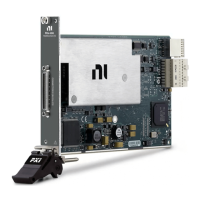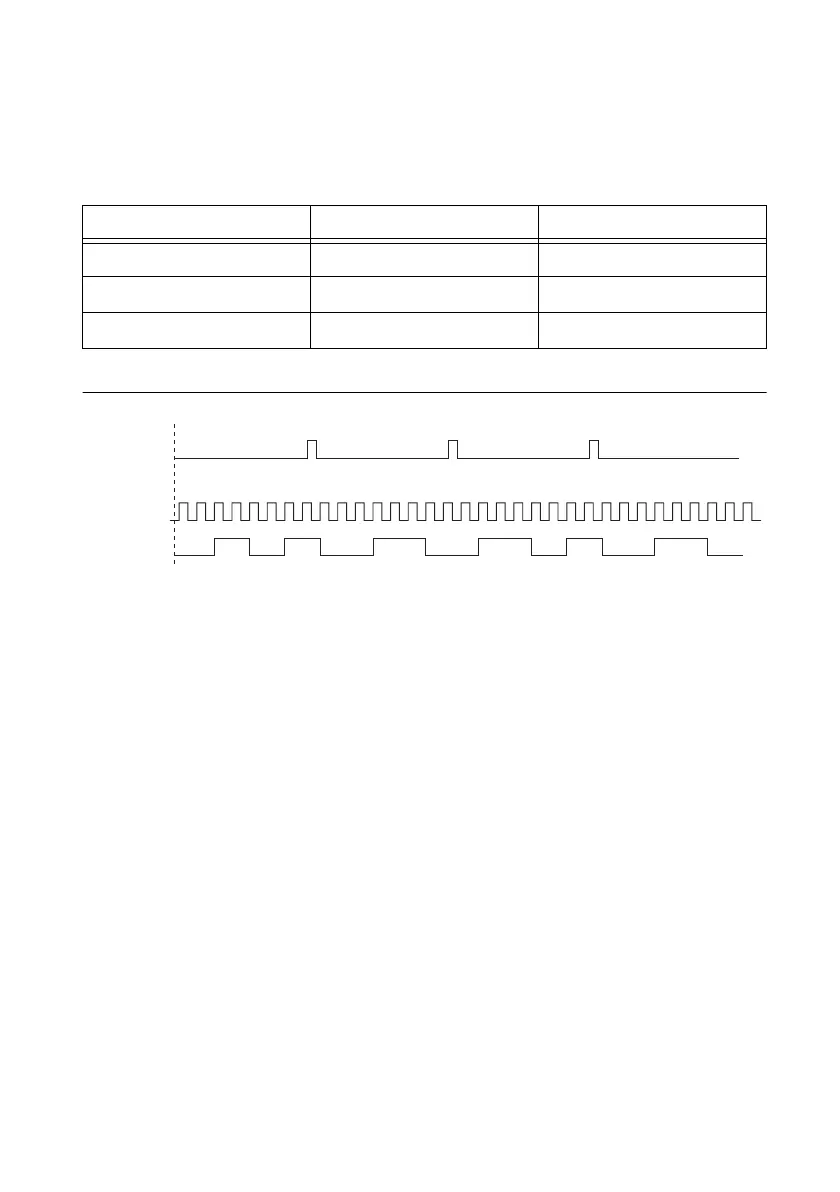© National Instruments | 7-33
X Series User Manual
Table 7-7 and Figure 7-35 detail a finite sample clocked generation of three samples where the
pulse specifications from the create channel are two ticks idle, two ticks active, and three ticks
initial delay.
Figure 7-35. Finite Buffered Sample Clocked Pulse Train Generation
There are several different methods of continuous generation that control what data is written.
These methods are regeneration, FIFO regeneration, and non-regeneration modes.
Regeneration is the repetition of the data that is already in the buffer.
Standard regeneration is when data from the PC buffer is continually downloaded to the FIFO
to be written out. New data can be written to the PC buffer at any time without disrupting the
output. With FIFO regeneration, the entire buffer is downloaded to the FIFO and regenerated
from there. Once the data is downloaded, new data cannot be written to the FIFO. To use FIFO
regeneration, the entire buffer must fit within the FIFO size. The advantage of using FIFO
regeneration is that it does not require communication with the main host memory once the
operation is started, thereby preventing any problems that may occur due to excessive bus traffic.
With non-regeneration, old data is not repeated. New data must be continually written to the
buffer. If the program does not write new data to the buffer at a fast enough rate to keep up with
the generation, the buffer underflows and causes an error.
Continuous Buffered Sample Clocked Pulse Train Generation
Continuous buffered sample clocked pulse train generation creates a continuous train of pulses
with variable idle and active times. Instead of generating a set number of data samples and
stopping, a continuous generation continues until you stop the operation. Each point you write
Table 7-7. Finite Buffered Sample Clocked Pulse Train Generation
Sample Idle Ticks Active Ticks
1 3 3
2 2 2
3 3 3
Source
Out
Counter Armed
Sample
Clock
Counter
Load Values
2 101 01 0 1 21 0 21 002102101002102110
3 222 33332 332

